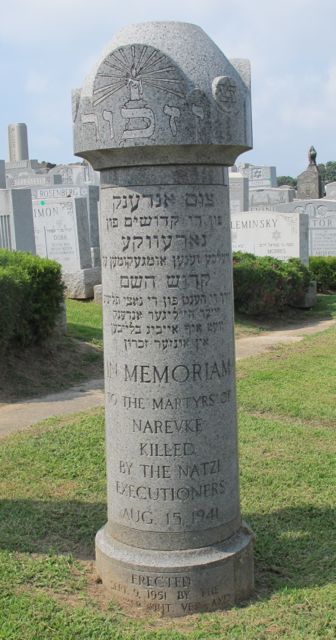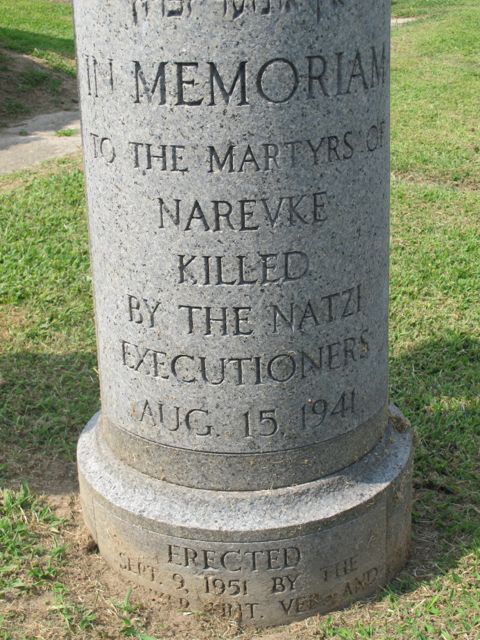 |
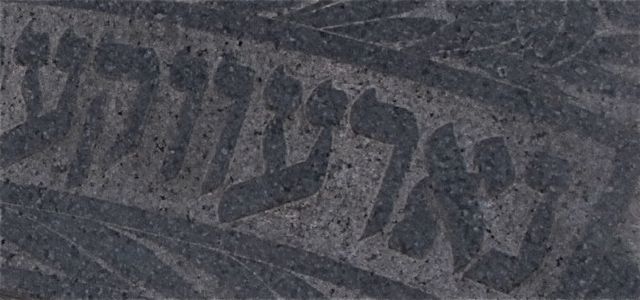 |
| Narewka
Home Page |
| Maps
& Gazetteers |
| Historical Texts &
Sources |
| Images: Past
& Present |
| Jewish Cemetery
(Kirkut) |
| Holocaust
& Memorials |
| Family &
Personal Stories |
| Family Pictures |
| Narevker
Landsmanshaftn |
| Websites &
Other Links |
 |
| Photos from Narewka August 2010 |
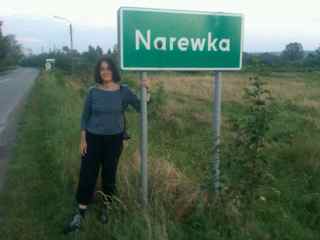 |
| Compiled
by Joy Kestenbaum Initially created December 2010 - Last updated November 2017 Copyright © 2010-2017 Joy Kestenbaum |
| JewishGen Home Page |
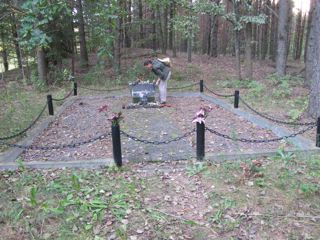
Narewka
Holocaust & Memorials
On 15 August* of 1941 the Jewish community of Narewka was destroyed - the male population was killed and the women and children were sent away to their ultimate death. A monument - a memorial to the Jewish victims of the Nazis - was later erected on the site of the massacre in the wooded area (near the Christian cemetery) on the north side of the train tracks near the village of Zabłotczyzna (Gmina Narewka), outside of the village of Narewka.*The date of the Aktion in Narewka varies in different sources. Pinkas Hakehillot says it took place on 15 July; the memorial in Narewka (Zabłotczyzna) has the date of 5 August; the monument in Mt. Hebron Cemetery in Flushing, New York, gives the date of 15 August. The surviving field report (war diary) of Lieutenant Riebel of the German 322 Police Battalion (Radfahrer-Bataillon or "bicycle battalion" - part of the Ordnungspolizei or "Order Police"), notes the date of 15 August 1941, when the battalion's Third Company rounded up the Jews of Narewka Mała: 282 Jewish men were shot and 259 women and 162 children were taken to Kobryn, where a ghetto was subsequently established, before they were eventually killed. (During the Aktion, apparently one Pole was shot for looting.) Some have said that women and children were held in a barn in Narewka, before they were killed; this latter account is noted in Leon Leyson's memoir, The Boy on the Wooden Box (p. 174), and was also told to me by a son of Moshe Birenbaum, who had heard this from his father, who had survived the war, returned to Narewka in 1957, and had spoken with non-Jewish residents. (The Radfahrer-Bataillon went from Bialystok, through the forest region of Białowieża, to Baranovichi (Baranowicze), to Minsk, and then Mogilev and Smolensk.) For the relevant pages from the surviving field report, see below; for more on the 322 Order Police Battalion, see the chapter, "The Order Police and the Final Solution: Russia 1941," in Ordinary Men; Reserve Police Battalion 101 and the Final Solution in Poland by Christopher R. Browning (New York: 1992, 1998), and the article, "From the Diary of a Killing Unit," by Konrad Kwiet in Why Germany? National Socialist Anti-Semitism and the European Context (Oxford and Providence: 1993), edited by John Milfull. Kwiet wrote that some Police Battalion 322 material is included in an SS war collection held in the Military Archives in Prague. Curiously, a man I happened to meet and speak with at the Museum and Centre of Belarusian Culture in Hajnówka told me about some records in Prague that documented the killing of the Jews in Narewka. The company diary is at the Zentrale Stelle Landesjustizverwaltungen.
Courtesy International Tracing
Service, Bad Arolsen, Germany, and U.S. Holocaust
Memorial Museum, Washington, D.C.,
from Zentrale Stelle der Landesjustizverwaltungen zur Aufklärung Nationalsozialistischer Verbrechen in Ludwigsburg, Germany
from Zentrale Stelle der Landesjustizverwaltungen zur Aufklärung Nationalsozialistischer Verbrechen in Ludwigsburg, Germany
Memorials:
Joy Kestenbaum at memorial in Zabłotczyzna in 2010. Barbara Kotin at memorial in Zabłotczyzna in 2015.
- Memorial to the Jewish Victims of the Nazis in Narewka (Zabłotczyzna) - Site of Mass Grave
- Monument to
Jewish Victims of Narewka in Mt. Hebron Cemetery,
Flushing, New York
The Narevker Landsman societies did not produce a yizkor book, but this monument in Mt. Hebron Cemetery is considered one of the oldest Holocaust memorials in the New York area, having been erected in 1951.Additional Victims from Narewka:
**************
JEWISH PRISONERS-OF-WAR (IN POLISH ARMY) MURDERED BY GERMANS
Meirtchak, Benjamin. Jewish Prisoners-of-War Murdered by Germans in the Lublin District 1939-1943, (Jewish Military Casualties in the Polish Armies in World War II, Volume III). Tel Aviv: Association of Jewish War Veterans of Polish Armies in Israel, January 1996.
Geller Mieczyslaw, b. 1915, Narewka; sapper
Polojko Szepsel, b. 1910, Narewka; non-commissioned officer
P.O.W. Polojko, Szepsel - Personalkarte
[Son of Freidke (nee Frydman) and Hersh Polojko; my grandfather's nephew. - JK]
Courtesy Emanuel Ringelblum Jewish Historical Institute, Warsaw
LODZ GHETTO HOSPITAL DEATH RECORDS
Fajngold Szolem, Narewka 1889, died 22 Jul 1942, malnutrition
PRUZHANY GHETTO RESIDENTS BORN IN NAREWKA SENT TO AUSCHWITZ - January 1943
Kestin Ewasr (survivor), Narewka 4/21/1925, Carpenter, father: Kestin Pejsa, mother: Dolinski Hana*Testimonies, Interviews, and Lectures:
Kestin Josef (survivor), Narewka 6/13/24, Carpenter, father: Kestin Pejsach, mother: Dolinski Chana*
Rozanski Szaja**, Narewka 2/1/1905, Cobbler, father: Rozanski Chaim, mother: Szynikowski Malka, wife: Szpilewska
Eszka
Simonowski*** Rachmil, Narewka 3/15/1912, Barber, father: Simonowski, Hersz, mother: Kurkin, wife: Rudy Mina
*Pesakh Yosef Kestin, born in Warsaw, 1897/1900, a baker, and Chana/Khana Kestin, born in Narewka, 1898/1900, lived in Hajnowka; Chana's maiden name was Dolinski, mother Malka; during the war in Pruzhany, murdered at Auschwitz; son Moshe also killed, (according to testimony submitted to Yad Vashem)
**Shaja Rozanski, born in Narewka in 1905, (to Isaac/Jakov and Chaia); merchant/grocer and married to Neszka, before the war lived in Hajnowka, during the war in Pruzhany, murdered at Auschwitz, (according to testimony submitted to Yad Vashem)
***Abram Simenowski, born in Narewka, 1911, a merchant in Narewka, son of Dov and Rakhel, was murdered in the Shoah, (according to testimony submitted to Yad Vashem)
**************
- Accounts, memories: Interviews: Aviva Nisenbaum (nee Leizon) ... (On the Virtual Shtetl website)
- Accounts, memories: Interviews: David Leizon ... (On the Virtual Shtetl website)
- Aviva Nissenbaum (nee Leizon) Testimony - USC Shoah Foundation Visual History Archive, Code 8880, 11/16/1995, Hebrew; on-site access only.
- David
Leizon Testimony - USC Shoah Foundation Visual
History Archive, Code 37542, 11/25/1997,
Hebrew; on-site access only.
- Leon Leyson Remembers: Holocaust Survivor Leon Leyson Tells His Story: Lecture at the Asper School of Business, University of Manitoba, 4 March 2010; (On the Asper Media Centre website) Leon Leyson, a native of Narewka, moved to Krakow with his family when he was nine years old.
- Leon
Leyson Testimony, about his early life in
Narewka, his family, his experiences during the
Holocaust and how he was saved by Oskar
Schindler. Available
online; go to the USC Shoah Foundation Visual
History Archive Online: You need to
register online and then search by the Leyson
name or interview code 8916. 11/16/1995,
English.
- An Evening with Leon Leyson - (3 Parts) - California State University, Los Angeles
- Oral
history interview with Janina Skiepko:
Skiepko,
born in Narewka in 1921, discusses
Narewka's prewar Jewish community; Soviet
occupation; harassment by the NKVD; arrival of
German forces; concentration camp in nearby
Gruszki; killing of Jewish men; conditions
under German occupation; local collaborators;
distribution of Jewish houses; Nathan Beyrak,
projector director for the U.S. Holocaust
Memorial Museum, Oral History Branch,
coordinated interview for the Polish Witnesses
to the Holocaust Project on 10 November 1998;
in Polish. United States Holocaust Memorial
Museum. Interview made possible by a grant
from Jeff and Toby Herr. For English summary
of oral history interview with Skiepo, from
Polish Witnesses to the Holocaust Project,
click here.
- Oral history interview with Nadzieja Krasowska: Krasowska, born in Narewka in 1909, discusses Narewka's ethnic diversity; prewar Jewish community; arrival of German troops; mass killing of Jewish community; local collaborators; brother's execution as a communist; appropriation of Jewish houses; Nathan Beyrak, projector director for the U.S. Holocaust Memorial Museum, Oral History Branch, coordinated interview for the Polish Witnesses to the Holocaust Project on 10 November 1998; in Polish. United States Holocaust Memorial Museum. Interview made possible by a grant from Jeff and Toby Herr. For English summary of oral history interview with Krasowska, frrom Polish Winteses to the Holocaust Project, click here.
- Snila mi sie Hana (I Had a Dream About Hana): 1999, 30 min., dir. Mikolaj Wawrzeniuk, Jerzy Leszczynski, TVP Bialystok (Telewiizja Polska SA - Bialystok), won a MF Film and Television Ethnic Prize, Krakow, 1999; Polish documentary about Christian villagers in Narewka, mostly Slavic Orthodox, who reminisce about their former Jewish neighbors. (See FilmPolski.pl) - (Due to licensing restrictions, the film is no longer available online in the USA and other locations)
- Testimony of Szymon
Kaminski regarding the fate of the Jews of
Hajnowka and Narewka:
02/02/1946, from The Bialystok
Ghetto Underground Archives (Mersik-Tenenbaum
Archive), Record Group M.11, Item ID 3714384, File
Number 255, Courtesy
of Yad Vashem. "Occupation of
Hajnowka by the German Army, 24 June 1941;
deportation of approximately 250 Jews from Narewka
for forced labor in a chemicals factory in
Hajnowka; transfer of the Jews back to Narewka;
deportation of the men to outside of Narewka;
murder of the men; deportation of the women and
children to Kobryn, on orders from Staczek
Solowej, the Polish deputy mayor; transfer of the
women and children to Pruzany by truck; death
march of 300 Jews to Pruzany including abuse
acts." English translation from the Polish to be
provided soon, courtesy of Barry Cohen.
- The Central Database of Shoah Victims' Names - Narewka (On the Yad Vashem website)
- The Cemetery Project - Holocaust Memorials - Narewka, Poland - Narevker Unt. Verein, Mount Hebron Cemetery, Flushing, New York (On the Museum of Family History website)
- Little Leyson, The Schindler Story
- Memorial to Jews of Narewka (On Bagnowka website)
- Memorial to Jews of Narewka (On Virtual Shtetl website)
- Narewka Mala, in Encyclopaedia of Jewish Communities, Poland, translation of Pinkas Hakehillot Polin, Vol. VIII (2005), pp. 459-460. (Courtesy of Yad Vashem and the JewishGen Yizkor Book Project; Narewka Mala: Joy Kestenbaum, project coordinator; David Ziants, translator)
- Yad
Vashem - Testimony of Szymon Kaminski,
regarding the fate of the Jews of Hajnowka and
Narewka, from the Bialystok Ghetto Underground
Archive (Mersik-Tenenbaum Archive (Description of
Content)

